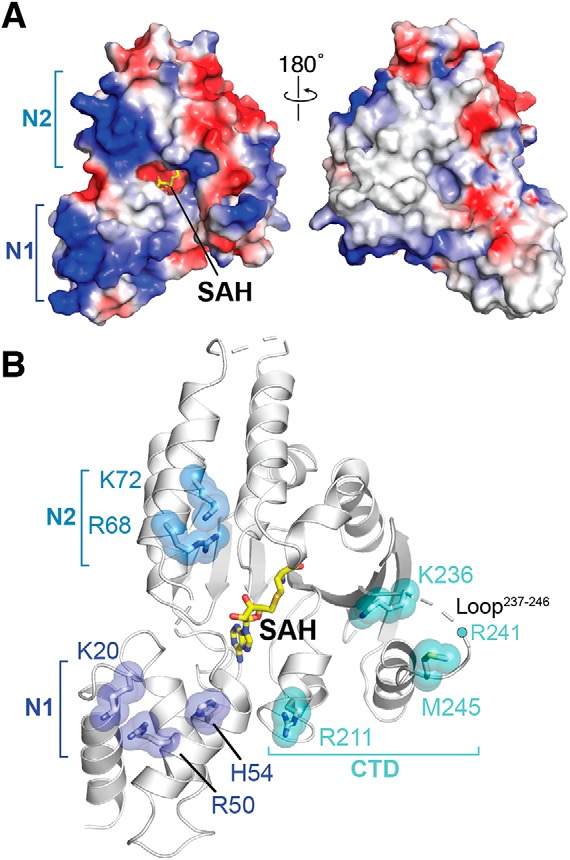Figure 3.

Selection of mutants defining the 30S interaction surface. A, the electrostatic surface potential of the RmtC structure reveals the N1 and N2 domains to be rich in positively charged residues (blue). B, locations of positively charged residues in the N1 and N2 domain and other conserved or putative functionally critical residues for 30S interaction. All residues shown as sticks with semitransparent spheres, as well as Arg241 (located in the partially disordered Loop237–246), were substituted to test their role in 30S recognition (see main text and Tables 2 and 3 for details).
